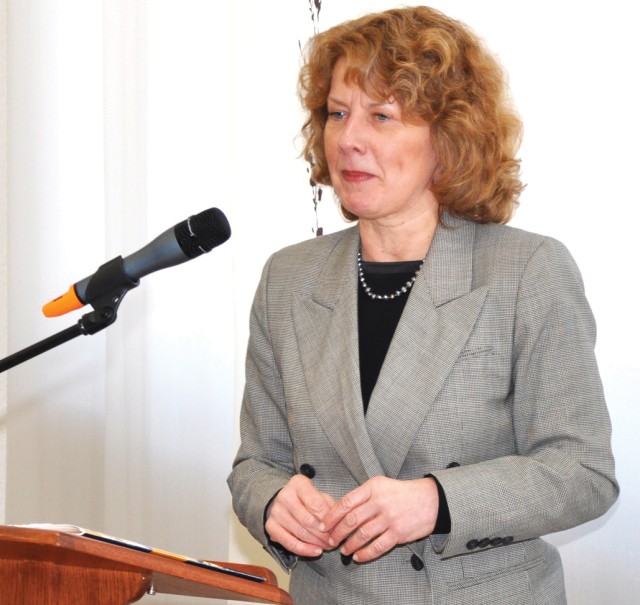WIESBADEN, Germany - With the most age diverse workforce in the history of the Department of Defense, knowing where coworkers are coming from means understanding their generations.
A,A
Christine Jones was a lieutenant colonel in the Army reserves when a young lieutenant asked her "why."
A,A
Jones said her mind began to race.
A,A
"What does he mean 'why''"
A,A
The word conjured up images from her rebellious 20s.
A,A
As a Baby Boomer, Jones saw "why" as a challenge to authority, a push back to the era of the Vietnam Conflict when young people marched the streets in protest.
A,A
But with a simple explanation the lieutenant gave a chipper affirmative response and carried on with completing his assigned task.
A,A
"When you hear a Generation Y person ask why, it has completely different meaning," said Jones, the U.S. Army Garrison Wiesbaden Employee Assistance Program coordinator. "Generation Y wants context."
A,A
Jones was the guest speaker at the April 6 Equal Employment Opportunity Office Lunch and Learn seminar on "Understanding Our Multigenerational Workforce."
A,A
From Traditionalists to Generation X, the workforce and its expectations and traits are continually changing.
A,A
A generational snapshot of today's workforce shows that the Baby Boomer generation accounts for 41 percent of the workforce with Millennials or Generation Y making up about 21 percent. Characterized as 42 to 60 years old, Baby Boomers have a population of about 78 million. They are from an era that grew up with the Vietnam War, Woodstock and the Watergate scandal. They are typically idealistic and time stressed.
A,A
Generation Y is the most recent generation to join the workforce growing up with computers, school shootings and terrorism on U.S. soil.
A,A
With 80 million people comprising its ranks, Generation Y is the future of the workforce, said author Buddy Hobart during a podcast for his book "Generation Y Now." He hypothesized that Generation Y will make up 75 percent of the world's workforce by 2025.
A,A
Hobart warned that because of the drastic differences in employee traits through the generations, the work place will need to evolve if it wants to retain members of Generation Y.
A,A
Broken down by eras, the differences in today's workforce are vast. On one end are the Traditionalists, the World War II generation that has mostly retired from the workforce, accounting for only about 8 percent of the workforce.
A,A
On the other end are the Generation X and Y workers for whom technology and computer use are woven into their daily activities whether they are at work or not.
A,A
In the week leading up to her EEO presentation, Jones admitted that she had experienced her first run-ins with Twitter tweets and the use of an iPod.
A,A
As a Baby Boomer, Jones said some of the newest technology is still foreign to her.
A,A
Jones stressed that understanding where coworkers come from can help to minimize the generational clashes that can occur on the job.
A,A
Like her run-in with the young lieutenant. To him it was a simple question. To Jones it was a lifetime of memories and carried a connotation for challenging authority.


Social Sharing